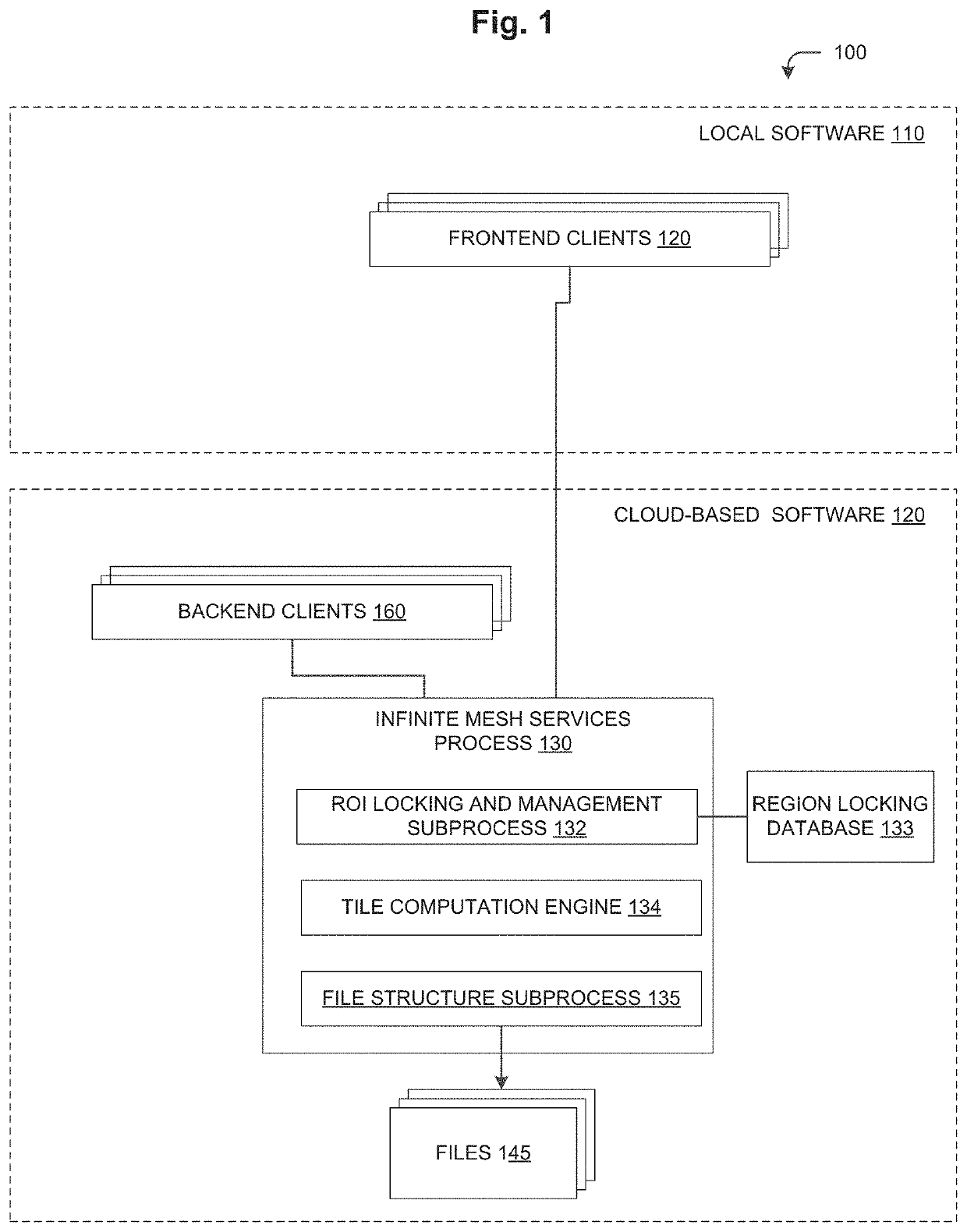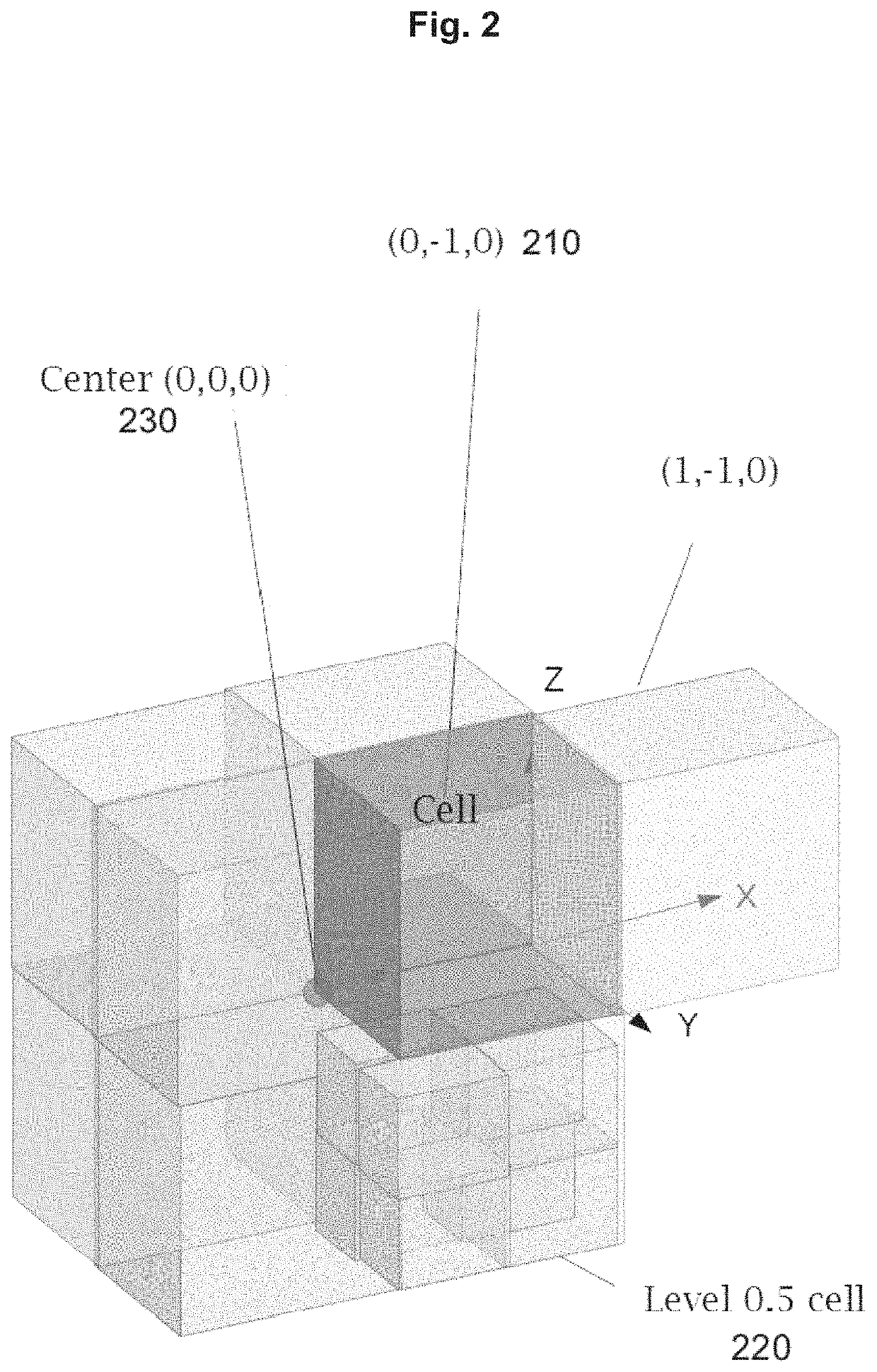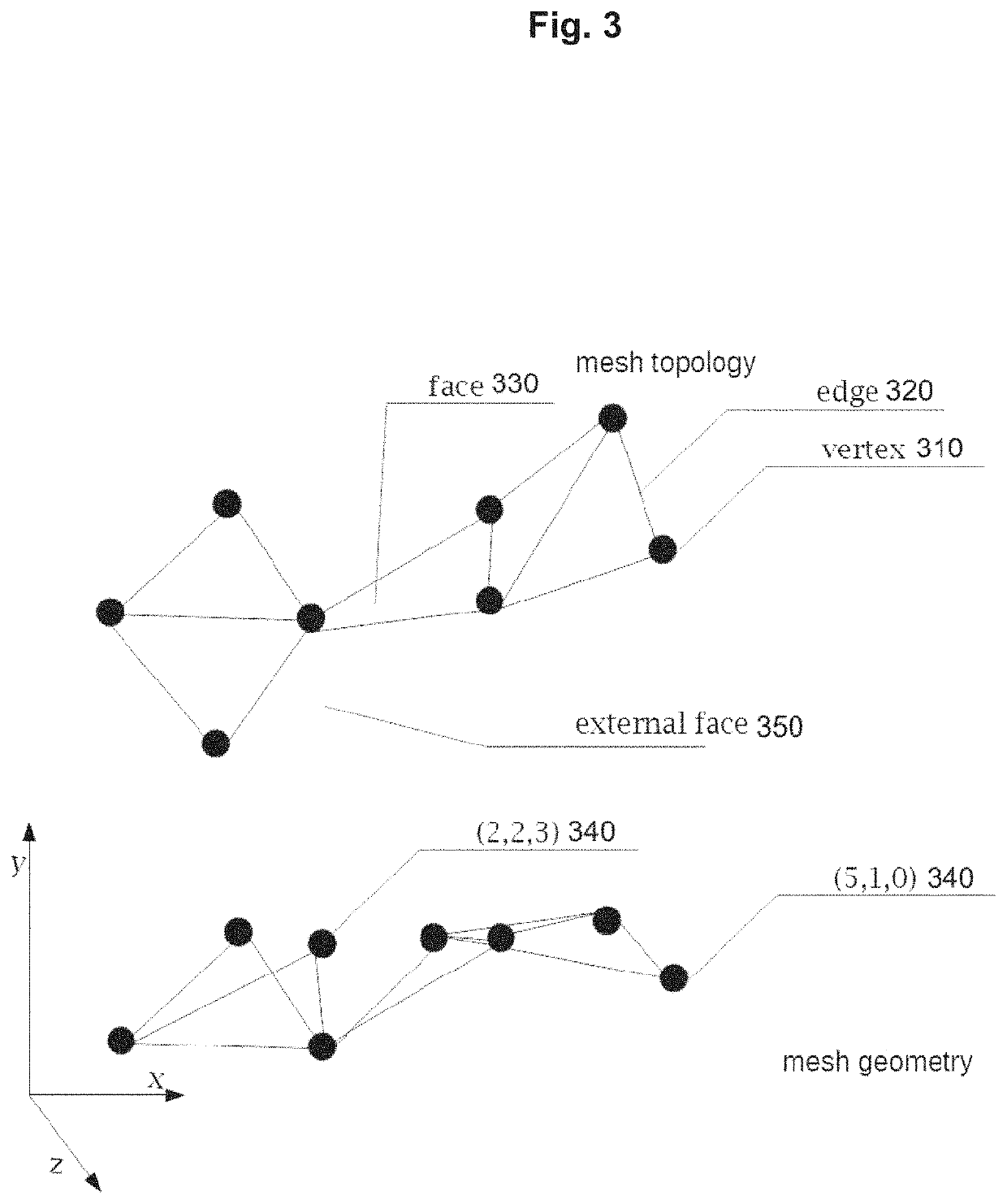Techniques for concurrently editing fully connected large-scale multi-dimensional spatial data
a multi-dimensional spatial and multi-dimensional technology, applied in the field of fully connected multi-dimensional spatial data editing, can solve the problems of inefficient approach, increased amount of processing and memory resources required to synchronize with the whole data, and concurrent edits
- Summary
- Abstract
- Description
- Claims
- Application Information
AI Technical Summary
Benefits of technology
Problems solved by technology
Method used
Image
Examples
Embodiment Construction
[0027]FIG. 1 is a high-level block diagram of an example software architecture 100 for a SfM photogrammetry application that generates fully-connected large-scale multi-dimensional spatial data. In an embodiment, where the fully-connected large-scale multi-dimensional spatial is a large-scale 3-D mesh, the dimensions may be height, width and depth. However, it should be understood that the data may have another numbers of dimensions and such dimensions may represent other information. For example, the data may be 4-dimensional data, with the fourth dimension representing time. In one embodiment, the SfM photogrammetry application operates to generate a large-scale 3-D mesh based on a set of images (e.g., photographs) of the real-world (source data) captured by a camera or cameras (not shown). However, it should be understood that other forms of source data may additionally, or alternatively, be utilized. For example, source data may include data captured by LiDAR, RGB-D cameras, or ...
PUM
 Login to View More
Login to View More Abstract
Description
Claims
Application Information
 Login to View More
Login to View More - R&D
- Intellectual Property
- Life Sciences
- Materials
- Tech Scout
- Unparalleled Data Quality
- Higher Quality Content
- 60% Fewer Hallucinations
Browse by: Latest US Patents, China's latest patents, Technical Efficacy Thesaurus, Application Domain, Technology Topic, Popular Technical Reports.
© 2025 PatSnap. All rights reserved.Legal|Privacy policy|Modern Slavery Act Transparency Statement|Sitemap|About US| Contact US: help@patsnap.com



